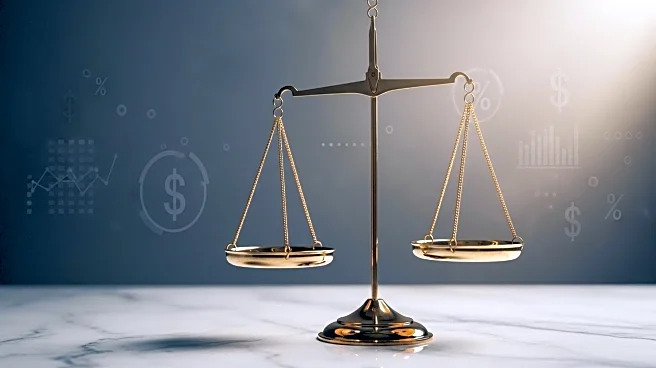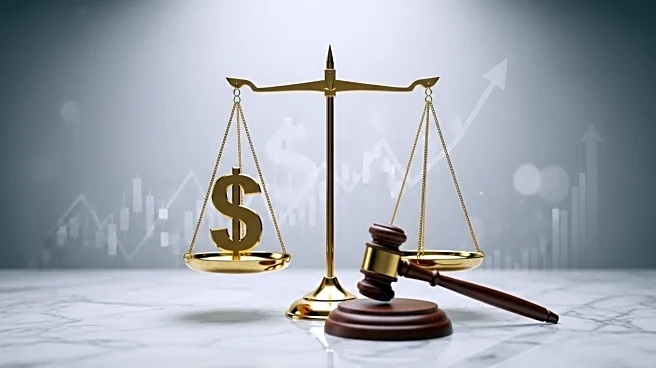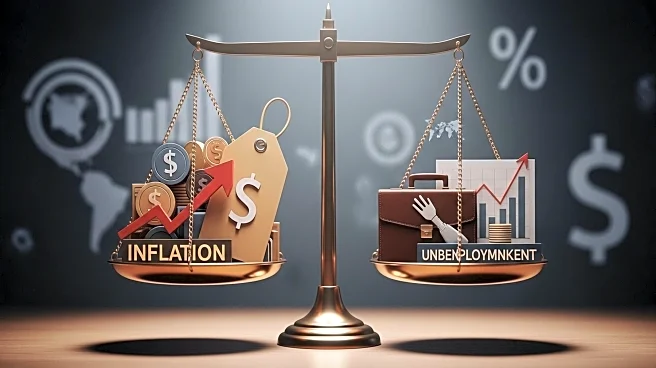What is the story about?
What's Happening?
The U.S. labor market is showing signs of distress as jobless claims have surged to their highest level in nearly four years. According to the Labor Department, the number of Americans filing for unemployment benefits rose by 27,000 to 263,000 for the week ending September 6, surpassing economists' forecasts of 231,000. This increase in jobless claims is seen as a significant indicator that the Federal Reserve will likely cut its benchmark interest rate next week. Fed Chair Jerome Powell had previously signaled openness to rate cuts at a central bankers' conference. However, the decision is complicated by elevated consumer inflation, which challenges the Fed's dual mandate of price stability and employment support. The labor market's deterioration is further highlighted by a Bureau of Labor Statistics revision showing 911,000 fewer jobs added in the year ending March 2025 than initially reported.
Why It's Important?
The potential interest rate cut by the Federal Reserve is crucial as it aims to stimulate economic growth and address the weakening labor market. A rate cut could encourage spending and investment, potentially boosting job creation. However, there is concern that such a move might exacerbate inflation, which is already above the Fed's target of 2%. The labor market's struggles are partly attributed to President Trump's economic policies, including tariffs that have created uncertainty for businesses. This uncertainty has led to reduced hiring and expansion, contributing to slower economic growth. The Fed's decision will have significant implications for businesses, consumers, and the broader economy, as it navigates the delicate balance between fostering growth and controlling inflation.
What's Next?
The Federal Reserve is expected to announce its decision on interest rates next week, with most analysts predicting a cut. However, if inflation expectations remain unchecked, the Fed might reconsider its stance in October. The labor market's trajectory will continue to be closely monitored, with further revisions to job gains expected in February 2026. Businesses and policymakers will need to adapt to the evolving economic landscape, potentially adjusting strategies to mitigate the impacts of tariffs and other uncertainties. The Fed's actions will be pivotal in shaping economic policy and influencing market dynamics in the coming months.
Beyond the Headlines
The broader implications of the Fed's potential rate cut extend beyond immediate economic concerns. There are ethical and policy considerations regarding the balance between stimulating growth and managing inflation. The labor market's challenges highlight the need for comprehensive economic strategies that address both short-term disruptions and long-term stability. The interplay between fiscal policies, such as tariffs, and monetary policies, like interest rate adjustments, underscores the complexity of economic governance. As the Fed navigates these challenges, the decisions made will have lasting impacts on the U.S. economy and its global standing.
AI Generated Content
Do you find this article useful?
















